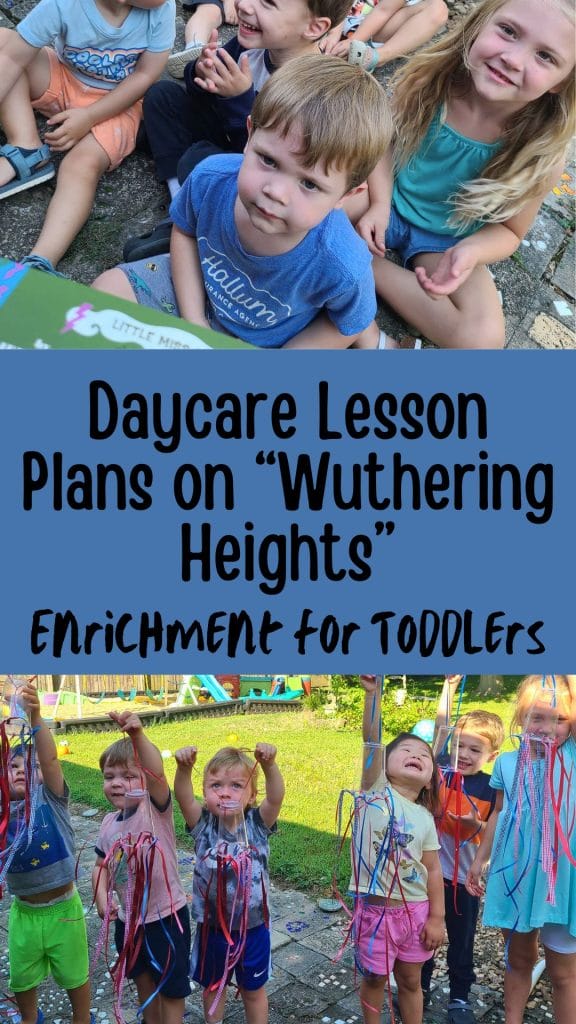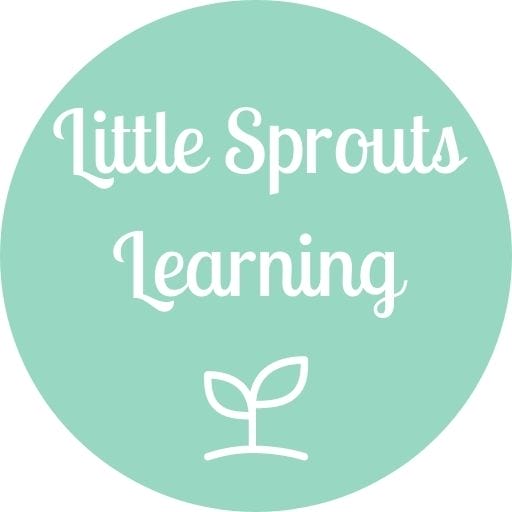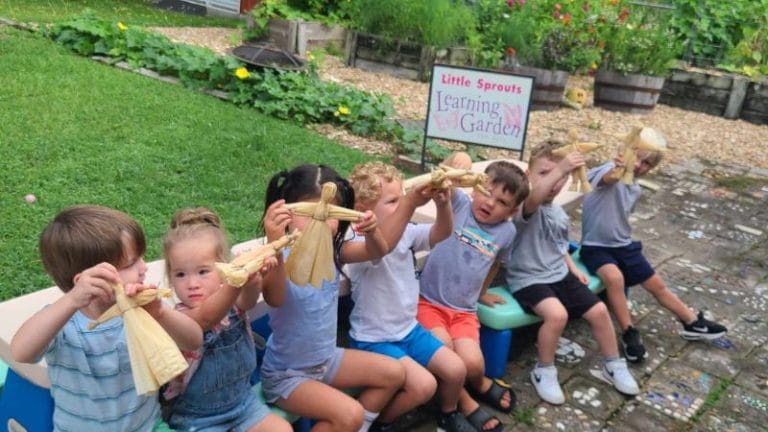Daycare Lesson Plans on Wuthering Heights
This page may contain affiliate links. Learn More.
One of our favorite things to study in our daycare is classic literature. Check out these daycare lesson plans on Wuthering Heights.

This week, we will take a creative and emotional journey through the moors, exploring the timeless story of Cathy and Heathcliff from the classic novel Emily Bronte’s “Wuthering Heights” in a way that is fun and age-appropriate for young children.
Through storytelling, art, dramatic play, and nature exploration, we will introduce the little ones to classic literature, help them understand different emotions, and inspire their creativity. Join us as we bring the enchanting world of “Wuthering Heights” to life!
Classic literature for toddlers and preschoolers
Studying classic literature with toddlers may seem unconventional, but it can offer several unique benefits:
- Language Development: Classic literature often contains rich and varied language. Even though toddlers may not fully understand every word or concept, exposure to this language can help them develop a broader vocabulary and better language skills. Introducing children to English language arts at a young age through fun main characters in a story will help lay the foundation for future learning.
- Imagination and Creativity: Many classic stories are filled with imaginative worlds, fascinating characters, and creative plots. These elements can spark a toddler’s imagination and encourage creative thinking and make great foundations for fun activities.
- Cultural Literacy: Classic literature often introduces themes, characters, and stories that are part of our cultural heritage. By introducing these early, toddlers begin to build a foundation for understanding cultural references and different cultures they will encounter later in life. You don’t have to explore the whole novel to get these benefits.
- Moral Lessons: Many classic stories convey important moral lessons or explore fundamental human experiences and emotions. These can be simplified and adapted to teach toddlers about values such as kindness, bravery, and empathy. They can learn about close friends and how to be a good friend.
- Parent-Child Bonding: Reading classic literature together can be a special bonding activity. The time spent reading and discussing stories creates memories and strengthens the relationship between the child and the caregiver.
- Attention Span and Listening Skills: Engaging with stories that may be slightly more complex than what they are used to can help toddlers develop better listening skills and a longer attention span.
While the full depth of classic literature may not be accessible to toddlers, selecting age-appropriate adaptations or focusing on specific elements of these stories can make the experience both enjoyable and educational.

Daycare lesson plans
To see more of our unique daycare lesson plans and curriculum for early childhood enrichment, check this out:
- Daycare Lesson Plans on Shakespeare
- Daycare Lesson Plans on Picasso
- Daycare Lesson Plans on Korean Culture
- Daycare Lesson Plans on Huck Finn
- Daycare Lesson Plans on Frida Kahlo
- Daycare Lesson Plans on “The Secret Garden”
- Daycare Lesson Plans on Louise Bourgeois
- Daycare Lesson Plans on “Anne of Green Gables”
- Daycare Lesson Plans on “The Very Busy Spider”
- Daycare Lesson Plans on “Goodnight Moon”
Wuthering Heights study unit
Creating a daycare lesson plan around “Wuthering Heights” can be challenging. However, you can adapt elements from the story to create an age-appropriate, engaging lesson plan that introduces children to classic literature in a simplified and playful way. It’s also perfect for a reading celebration. Try this Best Classic Literature Themed Tea Party for Daycare too!
The first thing I do when I create a lesson plan is to find a book and base it on that. I love the baby-lit series that makes Classic Literature appropriate for toddlers. And they have a book based on “Wuthering Heights”
Check out our lesson plan on “Wuthering Heights”. There are 8 days of plans available, 4 days/week for a two-week series. For a printable copy of these “Wuthering Heights” lesson plans with the Oklahoma ELG’s attached, check out our listing on Etsy.
1. Storytime: Simplified Version of “Wuthering Heights”
- Materials: Picture book adaptation of “Wuthering Heights” or a simplified retelling of key scenes.
- Activity: Read a simplified and age-appropriate version of the story. For our Baby Lit version, we studied weather because the book showed the different weather at the estate.
2. Exploring Emotions
- Materials: Emotion cards, mirrors.
- Activity: Discuss the different emotions the characters feel (e.g., happiness, sadness, anger). Use emotion cards to show different facial expressions and have the children mimic them using mirrors. Discuss times when they have felt similar emotions.

3. Winter: Melting ice
- Materials: Plastic containers, plastic toys, water, and a freezer.
- Activity: Freeze small toys in containers and give them to kids to melt and break out of the ice. Discuss with them how the ice feels and how it melts with the heat outside and from their body touching it.
4. Wind: Making wind socks
- Materials: Plastic cups, hole punch, ribbons.
- Activity: Punch holes around the cup and tie ribbons into each hole. Poke a ribbon through the top for a hanger and watch them blow in the wind. Hang them up to see how windy it is from inside.

5. Bubbles: Blowing bubbles
- Materials: Bubbles and wands.
- Activity: Blow bubbles and talk about how the air from your lungs fills up the bubbles.
6. Dramatic Play: Reenacting Scenes
- Materials: Simple costumes (scarves, hats), props (toy houses, trees).
- Activity: Set up a dramatic play area where children can reenact scenes from the story. Provide simple costumes and props to help them get into character. Guide them in acting out key moments, such as Cathy and Heathcliff playing on the moors.
7. Nature Walk: Discovering the Outdoors
- Materials: None (or small bags for collecting nature items).
- Activity: Take the children on a nature walk to explore a local park or garden. Encourage them to observe their surroundings and collect small nature items like leaves, stones, or flowers. Relate this to the characters exploring the moors in the story.
8. Emotion Dolls or Puppets
- Materials: Clothespins, fabric scraps, markers.
- Activity: Help children create simple dolls or puppets representing different emotions. Use clothespins as the base and decorate them with fabric scraps and markers. Use these dolls to talk about feelings and how the characters might have felt in different parts of the story.







